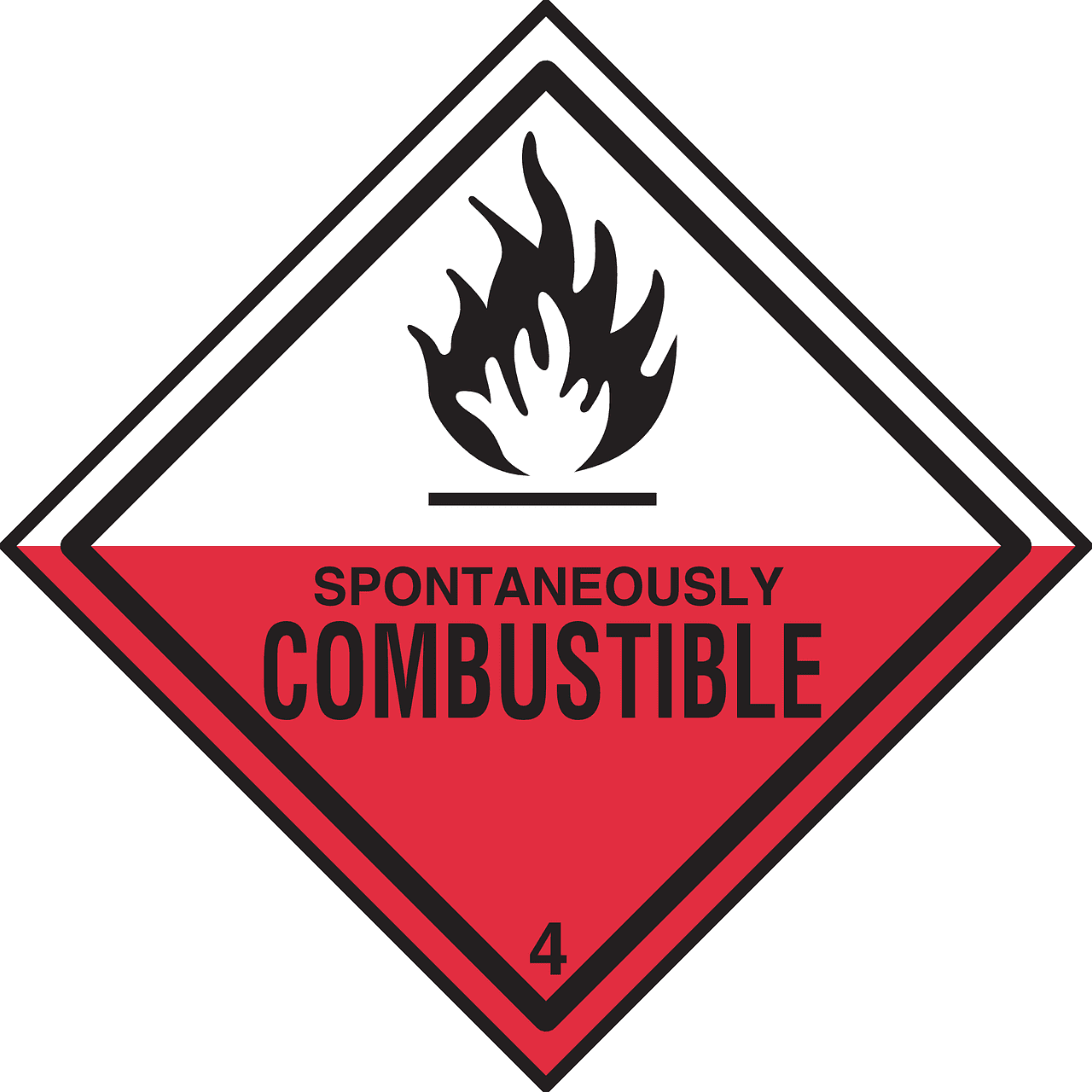
Like any hazardous waste material, flammable solids have the potential to cause danger if not properly managed. Defined as any solid that begins the process of combustion when exposed to an igniter, Class 4 materials must be carefully monitored, stored and disposed of. If your business uses materials considered to be Class 4 waste, keep reading our guide below to learn important information about this class of hazardous waste material.
Types of Class 4 Waste: Flammable Solids
There are three types of Class 4 waste: flammable solids, spontaneously combustible and water reactive. Each of these categories of waste has slightly differing igniting characteristics and should be handled accordingly.
Flammable Solids
Flammable solids are easily ignitable, creating fire easily when friction occurs, including self-reactive substances and desensitized explosives. This category of Class 4 waste can be recognized as a flame symbol placard with red and white stripes.
Spontaneously Combustible
Spontaneously combustible materials include self-heating substances and pyrophoric substances, materials which can spontaneously generate heat that leads to fire. This placard is a flame symbol with the top half white and red on the bottom half, typically with the words “Spontaneously Combustible.” These are especially important to monitor during transportation.
Water Reactive
Water reactive materials are substances that become dangerous when they come in contact with water, either reacting violently or emitting flammable gas. Common examples of water reactive hazardous waste includes calcium and calcium carbide, sodium and potassium. The placard for this substance is a flame symbol with a blue background.
Handling, Storage & Transportation Precautions
As a hazardous waste generator, there are specific safety measures that need to be taken for storing and shipping flammable solids. This includes but is not limited to the following:
- Maintain accurate, detailed hazardous waste labels
- Avoid accumulation of dust and debris
- Store materials separately from other hazardous waste materials
- Keep all containers tightly secured
- Store materials in a dry, cool, well-ventilated area
- Avoid ingestion, inhalation or physical contact with eyes and skin
- Keep away from any electrostatic charge, heat, friction or other sources of ignition.
Contact the Professionals at MLI Environmental
If your organization handles Class 4 hazardous waste, making sure it’s transported and disposed of properly is essential to maintain compliance with state and federal regulations – not doing so can be costly. This is especially important for transportation, as some flammable solids cannot be loaded or stored together in the same vehicle.
Working with an experienced hazardous management company will help you avoid large fines, potential injury and liability to your employees and the environment. To learn more about our waste services, please contact us at MLI Environmental today.
